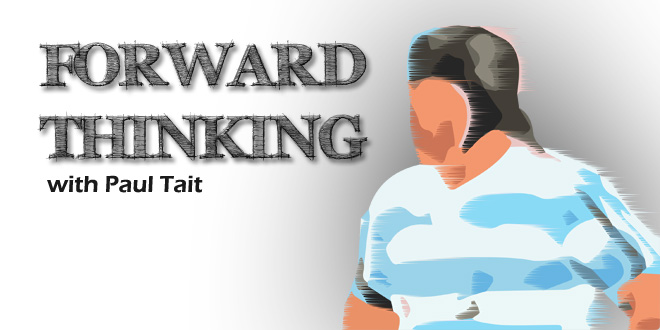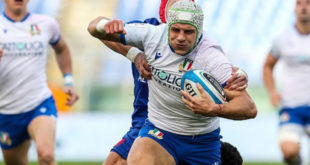A dominant scrum with mobile props. This is what Daniel Hourcade is seeking. Yet the traditional strength of Argentine rugby was exposed by Georgia. In San Salvador de Jujuy the Eastern Europeans dominated the battle, shoving Los Pumas backwards with regularity, winning penalties and even a penalty try.
Mission Hourcade
The Argentine Head Coach told Alejo Miranda that “we want to have the world’s best scrum, as it has always been. But if we put out players who can only scrum and are not able to play the style we are looking for, it won’t work.”
Hourcade’s hybrid approach makes Los Pumas more dangerous against certain sides but also leaves the team exposed against others. Last November the Pumas scrum impressed against Japan, Wales, Scotland and England. At home against New Zealand the South Americans were also impressive.
When looking back on the scrum under previous Head Coach, Santiago Phelan it is evident that the level has fallen. Phelan departed after he was unable to deliver results in the Rugby Championship. He did, nonetheless, have a dominant scrum.
Former Veteran Powerhouses
Finding the balance has seen Hourcade playing younger players than Phelan and also Marcelo Loffreda. Aged 35 and 24 Rodrigo Roncero and Juan Figallo were the starting props in 2012. In Rugby World Cup 2003 Roberto Grau and Omar Hasan started against Australia. They were 34 and 33 respectively.
Grau was joined by Mauricio Reggiardo against Ireland with Martín Scelzo on the bench. Their ages at the time were 34 and 28. Also in the squad was Roncero. Aged 27 he started against Romania, partnering Scelzo.
Four years on it was Roncero and Scelzo starting against France. The tournament opening triumph had props aged 30 and 31. The replacement that day was Santiago González Bonorino, a 32 year old.
Hasan missed out through injury but would return to take a spot on the bench in match two against Georgia. He was 36 at the time. The starting props were González Bonorino and Marcos Ayerza. This gave Argentina starting props aged 32 and 24.
Ayerza would start against Georgia in the following two Rugby World Cups. In New Zealand 2011 he did so aged 28 and in England 2015 aged 32. But in 2011 Ayerza was back-up to a 34-year-old. Indeed Roncero started against England, Scotland and New Zealand. Aged 23, Figallo partnered Roncero doing so with the then 35-year-old Scelzo on the bench.
Going For Youth
Ayerza was the starting loosehead in 2015. He was joined by Nahuel Tetaz Chaparro against New Zealand and Georgia but Ramiro Herrera against Australia, Tonga and Ireland. This gave Argentina starting props at the previous World Cup aged and 32, 26 and 26. Aged 27 Figallo was an injury call-up against Australia.
Ayerza missed the Bronze Final against South Africa through injury. His replacement was Lucas Noguera Paz who had earlier started against Namibia. Injuries saw Juan Pablo Orlandi and Santiago García Botta on the bench against the Springboks, both were injury call-ups. Orlandi was 32, Noguera Paz 21 and García Botta 23.
Pause for a second to compare this to Rugby World Cup 2003 or 2007. The age differences are striking.
Does this offer insight into the scrum woes against Georgia? Yes, without doubt. What did Ayerza, González Bonorino, Grau, Hasan, Reggiardo, Roncero, Scelzo all have in common? They were seasoned players with years of experience playing in the Top 14, Aviva Premiership or both. Many of them with club titles to their names. The same is not true of the current generation.
Against Georgia Hourcade started Tetaz Chaparro and Enrique Pieretto. The former was playing out of position at loosehead prop. This is a reflection of the low stocks following the end of the Ayerza era.
Pieretto also started both matches against England. He partnered Noguera Paz in the front row. As such the starting props were aged 22 and 23. With Tetaz Chaparro and Pieretto it was 28 and 22. Against Georgia their substitutions were Herrera and Noguera Paz. The scrum notably deteriorated as the second half unfolded.
Alternatives?
In 2014 Hourcade declared he intends on having a team capable of winning the 2019 Rugby World Cup. The players involved when he began are largely the same as those currently playing. The exceptions are those to have retired or who are playing in Europe.
Hourcade is thereby to use the same players from June for the Rugby Championship. This will also continue until 2019 itself. In other words the oldest props today are 28 and will be 30 when Argentina play in the Pool of Death in Japan.
Next in line for Jaguares and Pumas are Felipe Arregui, Facundo Gigena and Cristian Bartoloni. They are aged 23, 22 and 21 respectively.
Of those in Europe who could, theoretically, return and play three stand out above the rest. They are Francisco Gómez Kodela, Juan Figallo and Bruno Postiglioni. They will be aged 34, 31 and 32 when Japan 2019 gets underway.
Would recreating a dominant scrum be facilitated with their availability? Probably, yes.
 Americas Rugby News Rugby news from across the Americas!
Americas Rugby News Rugby news from across the Americas!




